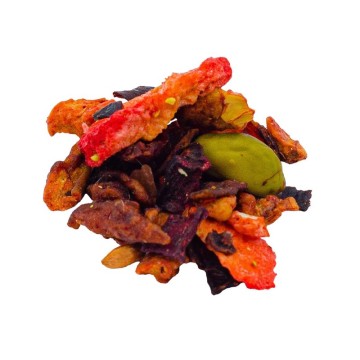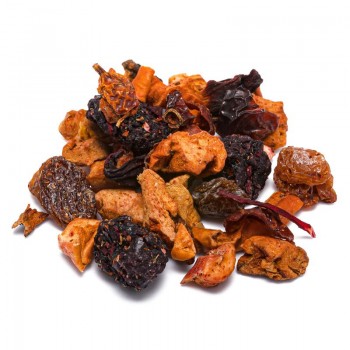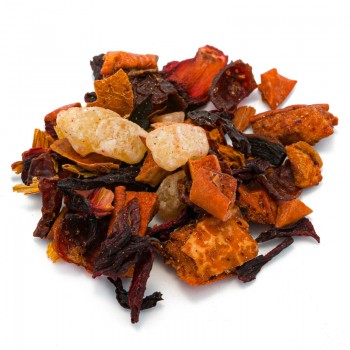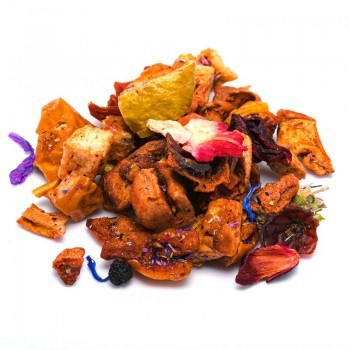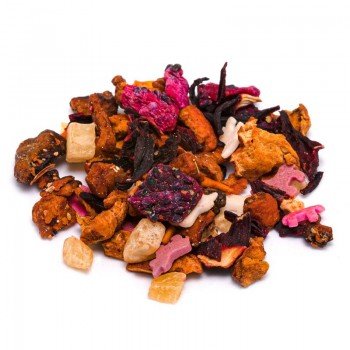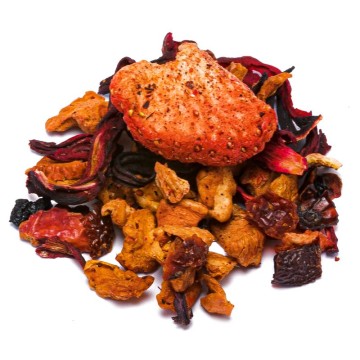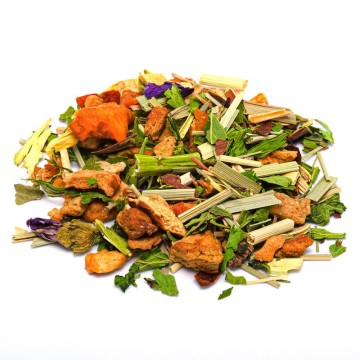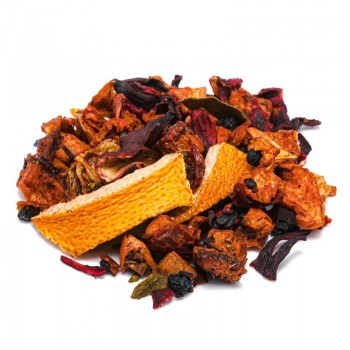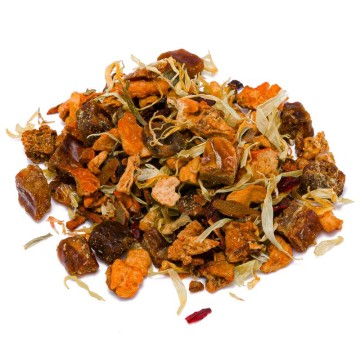This blend of fruits and spices can be sipped with pleasure, releasing pleasant and beneficial properties. As an infusion, the drink gives the tasty virtues of its ingredients, which make up an explosive mixture of tasty goodness. The delicious and citrusy aroma of the orange joins the sweetness of cinnamon and vanilla, enhanced by the inserts of mango, apple and hibiscus. An enveloping and rich flavor on the palate, with subtle pungent nuances added by the orange balanced by the "creamy" softness of the vanilla. As fragrant as it is delicious, this natural infusion of orange, vanilla and cinnamon is perfect for spreading an intense, pleasant and captivating aroma in the air.
Orange vanilla and cinnamon infusion: properties and benefits
By taking this infusion based on orange, vanilla and cinnamon, the beneficial characteristics of these ingredients are obtained - enhanced by other foods. The orange, with its excellent tonic and relaxing properties, provides the infusion with good doses of vitamins A and C - a contribution that replenishes energy and reduces tiredness. The orange provides antioxidant substances that help the beauty of the skin and counteract the damage of free radicals on cells.
Vanilla is also known as an antioxidant, thanks to vanillin – a compound that also promotes digestive health. Its exotic scent acts on psycho-physical relaxation and stimulates the senses. The rich sweetness of vanilla, appreciated all over the world, causes stimulating sensations, even known as an aphrodisiac in the past. The enveloping effect is increased by the intense and sweet aroma of cinnamon.
In reality, the properties of cinnamon are also beneficial, since it contains nutrients useful for the digestive system, such as tannins and pectins. Furthermore, like orange, it is able to tone up against psycho-physical stress, from fatigue, and favor concentration. It represents a spice used for centuries to enhance our well-being. It releases its digestive properties into the body, useful for improving intestinal transit - it has stimulating effects on gastric juices and stomach acids. A more efficient assimilation of food reduces the chances of irritation, intestinal gas formation, constipation, bloating, stomach upset. Furthermore, it is a spice that strengthens the immune system and in the infusion it can act together with orange, rosehip and hibiscus – known for their natural vitamin C content. A blend that makes this infusion beneficial.
There are several ingredients such as apple and which increase the diuretic and digestive potential of the drink. Sweet and tart orange, warm vanilla and spicy notes of cinnamon combine with the lightness of hibiscus and mango, for an inviting infusion.
Origins and History of cultivation
The herbal tea blend features various natural elements that help the well-being of the digestive system. To create this infusion, several ingredients have been used: apple, hibiscus, rosehip, mango, cinnamon, orange peel, bourbon vanilla. The sweet orange has been known since ancient times as one of the most exquisite citrus fruits, today among the most cultivated in the world. Its origin is uncertain, but it is known that the plant was present in China over 4000 years ago – a period in which the sweet orange would have been born from the bitter one.
Through trade between Eastern and Middle Eastern populations, it arrived in Asia Minor, Egypt, North Africa and finally Europe. Cultivated in Italy as a sweet orange only since the Renaissance, in Sicily and Calabria, the orange tree was introduced over the centuries to almost all over the world - for the beauty of its flowers and for its fruit. Vanilla is one of the oldest aromas, known for centuries to the populations of South America. It is obtained from the long pods of the vanilla plant, an orchid native to southeastern Mexico. The indigenous people, the Aztec natives, used it to flavor xocoatl, the original chocolate drink.
The spice is obtained by subjecting the pods to a precise manufacturing process, which lasts several months. After development, they are harvested and processed to obtain the desired aromatic nuances. Even today, vanilla is used to flavor foods and drinks, chocolate, sweets, ice cream, and in perfumery. It is mainly cultivated in Madagascar, Indonesia and in the islands of the south-western Indian Ocean. Cinnamon was considered a potent health-promoting spice, used in ancient times to promote human health. In infusions, cinnamon was used in its form of sticks derived from the root. It is obtained by drying from the inside dthe bark of the tree.
In the process of dehydration, the bark curls up and creates the cinnamon stick. It has been used for thousands of years, already known as embalming perfume to the ancient Egyptians. Brought to Europe by Arab traders, it soon became popular with the Greeks and Romans for its ability to preserve meat and, in addition, medicinal properties were attributed to it.
Plant and flowers
There are many components of the infusion, and the mixture contains fruits, spices and flowers from different sources. The orange tree, which gives the fruits of oranges, is Citrus sinensis L. belonging to the Rutaceae family. Sweet oranges are distinguished from bitter oranges. Many scholars think that Citrus sinensis is a hybrid plant, a cross between the pomelo and the mandarin born in China. As a height it can reach 12 meters, with elongated leaves and the famous white flowers. The tree rests for only 3 months, then it flowers and bears fruit at the same time. Over the centuries, many varieties of orange have been developed, also because this citrus fruit grows easily on many soils, and all over the world. Cinnamon comes from the Indian subcontinent, from the island of Ceylon (formerly Sri Lanka), from the Cinnamomum zeylanicum plant. It belongs to the Lauraceae family, Known as true cinnamon, today it grows in much of southern and south-eastern Asia, in Madagascar and on the Seychelles islands.
It grows well on moist and well-drained soils, reaching about 15 meters in height. Cinnamomum cassia, the most common and popular variety, is usually used in cooking, but there are numerous other species that can have similar effects such as "true cinnamon" Cinnamomum zeylanicum from Ceylon, Vietnamese cinnamon (C. loureiroi), Indonesian cinnamon ( C. burmannii) and Malabar cinnamon (C. citriodorum). Vanilla comes from the vine Vanilla planifolia, the most important species among the 110 of the genus Vanilla, perhaps derived from a species native to Central America. They all belong to the Orchidaceae family. These plants display numerous flowers, ranging from creamy white to pale green.
They open in turns and last only one day during the flowering season, which lasts about two months. The fruit ripens slowly, it is a long capsule that gives unripe pods, when they turn golden at the base. The vanilla pods from which the seeds and aroma are extracted derive from various types of orchids including Polynesian Vanilla x-tahitensis and Vanilla pompona from the West Indies. The infusion contains Bourbon Vanilla which grows in Madagascar and on Reunion Island (formerly Bourbon Island). The Hibiscus plant branches out into numerous species, all belonging to the mallow family (Malvaceae). Originally from warm temperate and tropical regions, they give the showy hibiscus flowers, used as edibles. They work for tea or to create dried hibiscus. Rosehip is the fruit of Rosa canina, a species of Rose - perennial plant of the Rosaceae family.
Among the more than three hundred species and thousands of cultivars of this plant, some give the rosehip, a false fruit - the real one is given by the achenes inside the rosehip. The Malus domestica plant of the Rosaceae family is the one that gives the apples. It is a tree native to Asia, now spread all over the planet. The fruits differ in colors and in many varieties. The mango fruit comes from the Mangifera Indica plant, an evergreen plant belonging to the Anacardiaceae family. The flowers bloom pinkish-white or yellowish, but not all bear fruit. Mangoes take three to six months to ripen, depending on the variety.
Nutritional values of the orange vanilla and cinnamon infusion
The infusion makes vitamin C and vitamin A available, as well as some minerals (fluorine, zinc, manganese, copper, iron). Cinnamon adds the compound cinnamaldehyde, which gives cinnamon its scent, polyphenols and tannins. How to use the ingredients in the infusion The orange, vanilla and cinnamon infusion is obtained by placing about 3-5 grams of the mixture in water at 100 °C in a cup (250 ml). Leave to infuse for 10 to 12 minutes before drinking. Add honey or sugar, if desired.
Orange vanilla and cinnamon infusion: side effects and contraindications
It is necessary not to exceed the doses or take the infusion for too long periods. Excessive intake can cause laxative effects, acidity in the stomach, nausea. The vanilla component could cause headaches and drowsiness, while the cinnamon in large quantities could cause a burning sensation in the oral cavity. Caution is advised in pregnant or breastfeeding women.




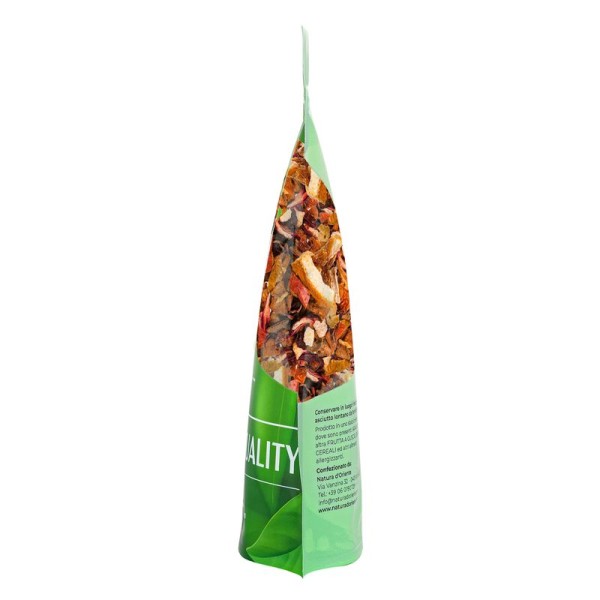






 No reward points for this product.
No reward points for this product.
![infuso pesca melone [Natura d'Oriente]](https://www.naturadoriente.com/3535-home_default/infused-peach-melon.jpg)
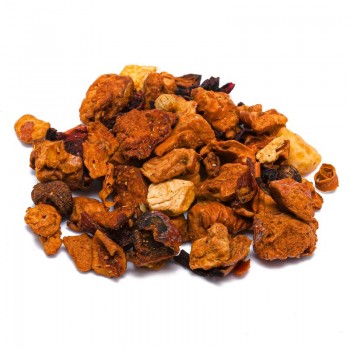

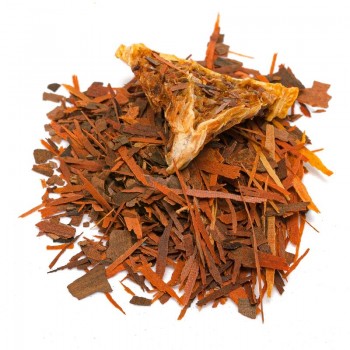
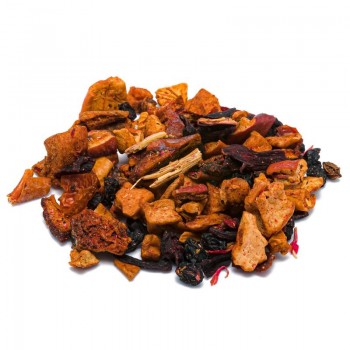
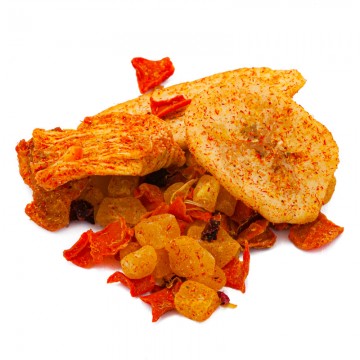
![infuso lime mirtilli rossi [Natura d'Oriente]](https://www.naturadoriente.com/3551-home_default/lime-infused-cranberries.jpg)
